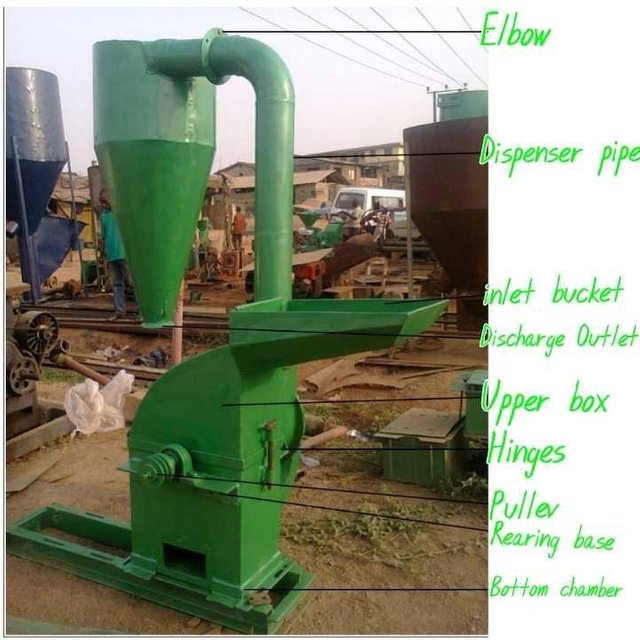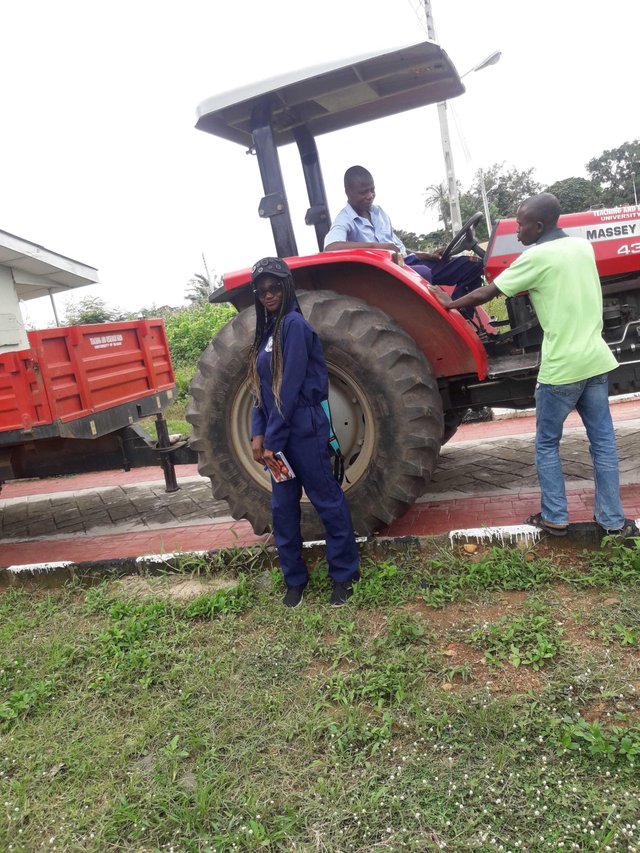FABRICATION OF CASSAVA CHIPS CABINET DRYER

Cassava chips cabinet drier is used to dry the moisture content of cassava so that bacteria, yeasts, and moulds cannot grow and spoil the crop.
Cassava chips have to be dried to moisture content of around 12% to 15% from the original moisture content of 65% to 75% (Dzisi, 1997). Once dried, the chips should break easily without crumbling. If no other storage method is used, drying should take place within two days of harvesting to ensure the quality of the product is maintained. Cassava chips are often infested by insects during the drying process so the time taken to dry the chips is important.
Materials Used
- Angle iron
- Voltage/speed regulator
- Galvanized sheet
- Riveting pins
- Electrode
- Bolts and nuts
- Blower with electric motor
- Screws
- Heating element
- Plugs
- Contactor
- Wires
- Digital temperature controller and sensor
- Fibres (insulating materials)
- Steel chalk
Tools
- Try square
- Measuring steel tape
- Welding tong
- Scriber
- Sledge hammer
- Steel rule
Machines
- Grinding machine
- Arc-welding machine
- Oxyacetylene gas
- Cutting machine
Procedures
Step 1: Design Procedures
i. The size of the dryer was determined as a function of the drying area needed per kilogram of cassava chips. The drying temperature was established as a function of the maximum limit of temperature the cassava chips can support.
ii. The size of the electric motor selected was calculated as a function of the power required to drive the blower and move the hot air over the chips to achieve drying at the calculated drying time and air flows.
Step 2: Fabrication of the cabinet
i. The cabinet which is to contain the set of drying on which the cassava chips will be spread is made of 1mm galvanized sheet marked, a a double wall lagged with fibre (in order to absorb heat).
ii. The square frame of the box was constructed of four pieces of square pipes each of 850mm in length. The sheet was given a clearance of 5mm on each side to cater for the folding over the square pipes. The sheet was joined to the frame using riveting pins of size 4mm in thickness.
Step 3: Fabrication of the drying chamber
i. The drying chamber is sectioned towards the bottom of the cabinet. It consists of the drying trays which are 8 in numbers.
ii. The tray rests on the vertical support made of square pipes and crossed by angle iron joined by electric weld.
Step 4: Fabrication of the blower section
i. The blower was mounted at the bottom of the cabinet.
ii. The motor of the blower has 3 coupling points through which blower is fabricated with coupling unit.
iii. The fabricated coupling unit was done in such a way to cater for detachment of the blower in case of maintenance or repair using joined flat iron bar.
Step 5: The heating element
i. The heating element is rated 2.2kw and mounted in front of the blower. The heating element was filled to vertical holders of the tray by means of binding wires.
Step 6: Fabrication of the door
i. The door of the dryer was made from square pipe and galvanized sheet
Step 7: Thermocouple and temperature sensor
i. The temperature sensor selected is a digital type connected to a thermocouple in order to ensure a preset temperature and thus prevent from being damaged.
Step 8: Fabrication of the roof
i. The roof was made from galvanized sheet in the form of a pyramid.
With the steps above, the cassava chips cabinet was set up
Thanks for reading
your versatile student Engineer, @jeaniepearl

Nice one dear keep up the good work.
Downvoting a post can decrease pending rewards and make it less visible. Common reasons:
Submit
The agricultural engineer. Well done.
Downvoting a post can decrease pending rewards and make it less visible. Common reasons:
Submit
thanks dear
Downvoting a post can decrease pending rewards and make it less visible. Common reasons:
Submit
Oh thats really good.
God bless you.
Thanks for sharing.
Downvoting a post can decrease pending rewards and make it less visible. Common reasons:
Submit
thanks much
Downvoting a post can decrease pending rewards and make it less visible. Common reasons:
Submit
You are wellcome madam
Downvoting a post can decrease pending rewards and make it less visible. Common reasons:
Submit
Proud of you always babes! Thanks for this detailed description. Cheers!
#Bigwaves
Downvoting a post can decrease pending rewards and make it less visible. Common reasons:
Submit
thanks ma
my pleasure
Downvoting a post can decrease pending rewards and make it less visible. Common reasons:
Submit
Oh I never know you were an engineer. I saw your video entry for our first crowd source video and you were on this outfit, I didn't wrap my brain around it then.
Now to your write up above, truth is I might not understand all the terms there but I'm impressed to see that you have practical knowledge of these things.
Downvoting a post can decrease pending rewards and make it less visible. Common reasons:
Submit
yeah a student Engineer. .
not full knowledge tho,still growing.
thanks much
Downvoting a post can decrease pending rewards and make it less visible. Common reasons:
Submit
Congratulations! This post has been upvoted from the communal account, @minnowsupport, by jeaniepearl from the Minnow Support Project. It's a witness project run by aggroed, ausbitbank, teamsteem, theprophet0, someguy123, neoxian, followbtcnews, and netuoso. The goal is to help Steemit grow by supporting Minnows. Please find us at the Peace, Abundance, and Liberty Network (PALnet) Discord Channel. It's a completely public and open space to all members of the Steemit community who voluntarily choose to be there.
If you would like to delegate to the Minnow Support Project you can do so by clicking on the following links: 50SP, 100SP, 250SP, 500SP, 1000SP, 5000SP.
Be sure to leave at least 50SP undelegated on your account.
Downvoting a post can decrease pending rewards and make it less visible. Common reasons:
Submit